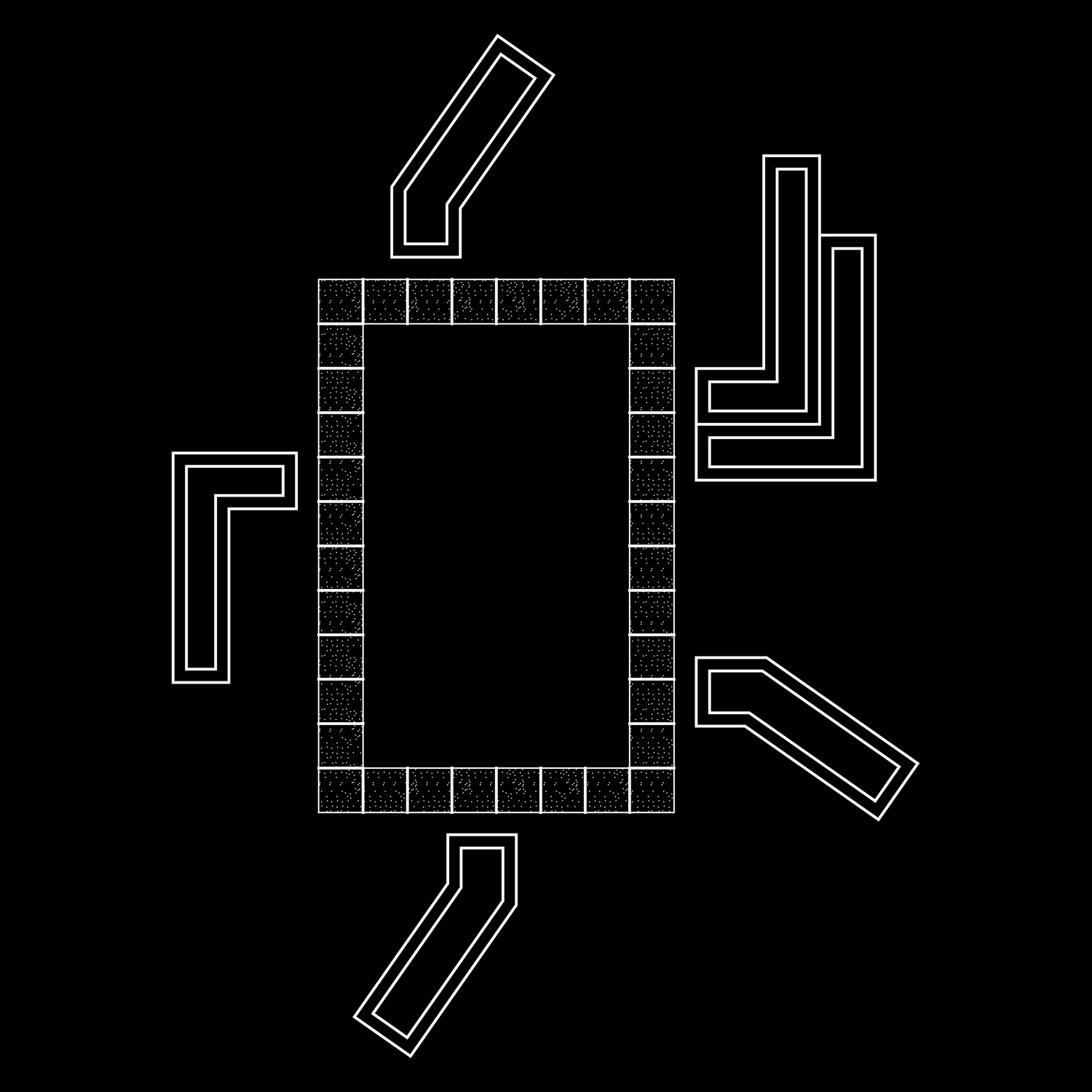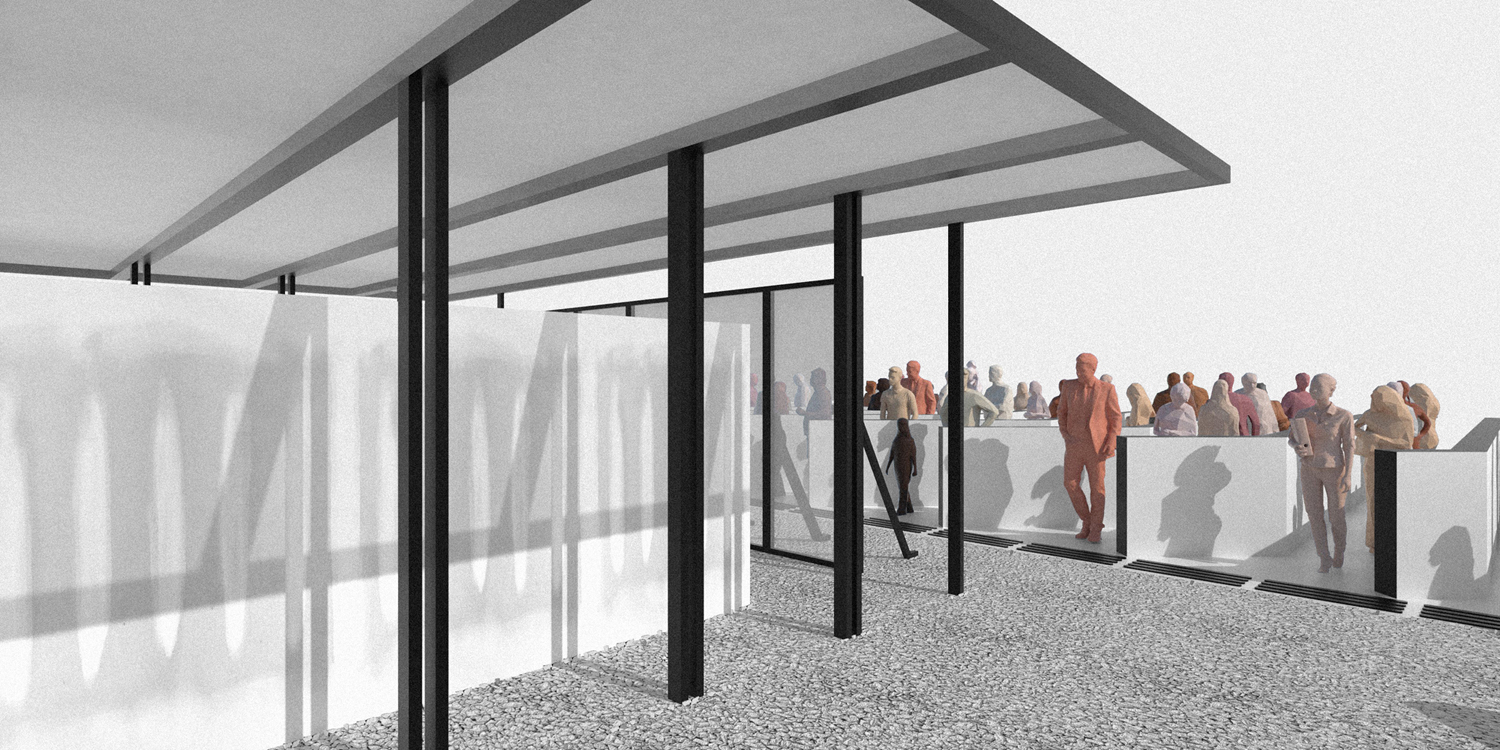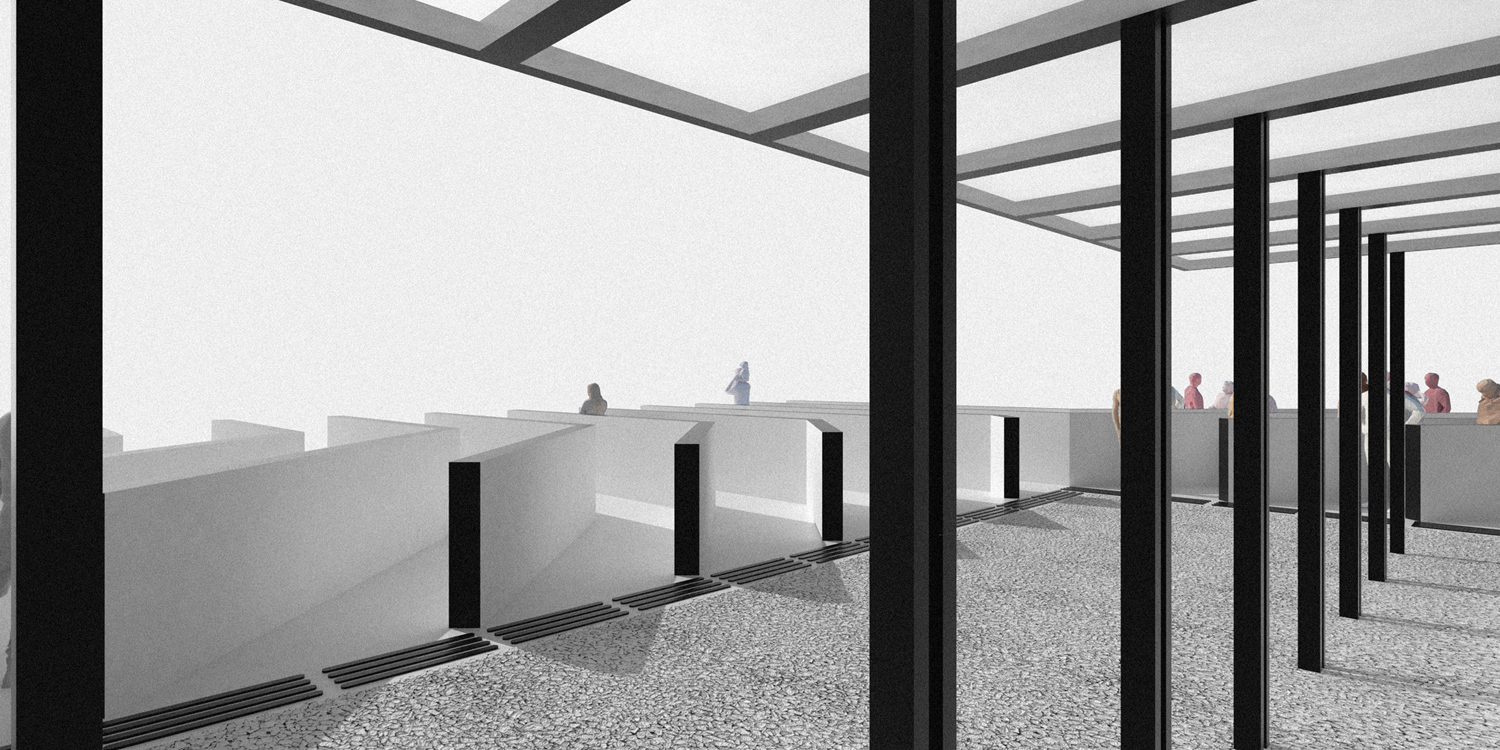Waiting Room of Democracy
In his article “Atmospheric Politics,” Peter Sloterdijk argued “democracy depends on the ability to lend a spatial dimension to things said one after the other; it therefore implies constant training in patience.”
In order to become a citizen, then, one must exercise the patience needed to listen while others speak. Architecture is therefore required to imagine a space that would enable both the emergence and the training of patience.
While traditional conceptions of the public realm have been based on the assumption that social consensus emerges via rational discourses, this waiting room focuses on patience as the means to achieve empathy. If previous types of democratic assembly have always proposed spaces for bringing together citizens, this Waiting Room of Democracy is a location where only two individuals are randomly paired up in order to speak and listen to each other. A contemporary spatial expression of democracy should not be concerned with the consensus of the crowd but, rather, with the empathy between individuals.
As it happens in other instances when people wait, this room places people in limbo: everything shifts to a state of suspension while two strangers patiently discuss how citizens can live together. As other waiting rooms, this room is not an end in itself. This waiting room can only exist within democratic realms but democracy does not happen here: it happens elsewhere through the actions of citizens. Nevertheless, this waiting room is a necessary means for reestablishing the most essential quality for citizenship to continue to exist in times of instant gratification and simulation: the ability to wait and listen to others speak.
This waiting room would be located in the Parc du Cinquantenaire within the axial composition of power, symbolism, and order that structures the center of Brussels. This axis connects the Triumphal Arc with its oversized Belgian flag, the headquarters of the European Union, and the Parc du Bruxelles, a former hunting ground next to the Royal Palace.
Despite it being a real place, this waiting room is a ghost of other spaces (labyrinth, garden, immigration center) and, as such, it becomes a space in limbo that is simultaneously pleasurable, rational, boring, tiring, reflective, and frightening, a combination of emotions that is the basis of any democratic dialogue.
Project Data
Speculative project
2018
Designers
Sergio Lopez-Pineiro
Tammy Teng
Exhibitions
Form N-X00: New Forms for Citizenship at the US Pavilion Biennale Architettura 2018
Inside Out at the Harvard Graduate School of Design
























